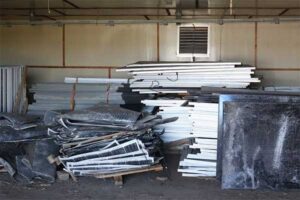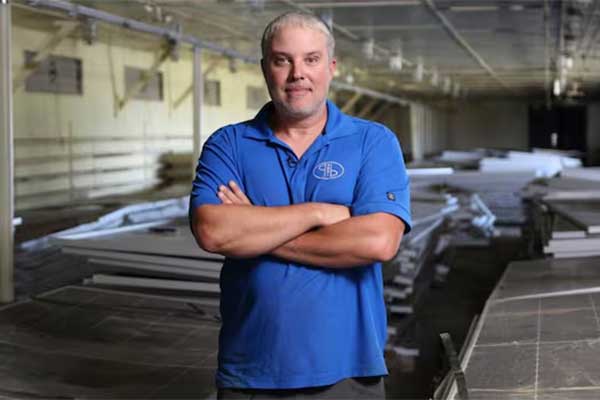In Brooks, Alberta, a former pheasant hatchery now houses thousands of damaged solar panels, stacked waist-high and collecting dust.
As reported in a recent CBC News Calgary report, Dan Carrocci, president of Sunset Renewable Asset Management, has been stockpiling nearly 10,000 panels—many damaged in manufacturing or during installation—with the hope of developing a recycling solution for solar panels. Carrocci refers to the problem as the “big green elephant” of renewable energy: what to do with the waste as solar and wind power installations continue to rise.
According to the Smart Prosperity Institute, Canada could see up to 470,000 tonnes of expired solar panel waste and millions of tonnes of wind turbine waste by 2050. While clean energy is critical to addressing climate change, the growing volume of renewable energy waste raises environmental concerns of its own.
Limited Recycling Options
Both solar panels and wind turbines are mostly recyclable—85 to 90 percent of their materials can be reused—but the process isn’t simple. “They’re recyclable, but it’s challenging and often costs more than the materials are worth,” explains Warren Mabee, director of Queen’s University’s Institute for Energy and Environmental Policy.

According to a report, by 2050, Canada will be dealing with hundreds of thousands of tonnes of unusable solar panels. (via CBC News)
In 2020, Alberta launched a pilot project to recycle solar panels as electronic waste.
The program had limited success, with panels shipped to the U.S. for recycling. “Shipping isn’t a long-term solution,” says Ed Gugenheimer, CEO of the Alberta Recycling Management Authority. The province is now looking at creating a local recycling system.
Carrocci’s company is working on a mobile deconstruction unit that can strip panels down for parts, including metals and silicon, which could be repurposed into products like concrete or asphalt.
Looking Ahead
As Canada ramps up its renewable energy capacity, the issue of what happens at the end of the lifespan of solar panels and turbines is becoming more urgent.
Provinces like Alberta and British Columbia are starting to address the challenge, but the question remains: How do we build a sustainable recycling system for renewable energy infrastructure?
For companies like Carrocci’s, the problem also presents a business opportunity. “We’re in early days, but in 20 years, companies focused on recycling are going to be booming,” says Evan Wilson of the Canadian Renewable Energy Association.
With innovative solutions on the horizon, the waste challenge could turn into a major growth sector for the renewable energy industry.













Comments